Active Recombinant Human CA7 protein(Met1-Ala264), His-tagged
| Cat.No. : | CA7-2499H |
| Product Overview : | Recombinant Human CA7 (P43166) (Met 1-Ala 264) was expressed in E. coli, fused with a polyhistide tag at the C-terminus. |
- Specification
- Gene Information
- Related Products
- Case Study
- Application
- Download
| Species : | Human |
| Source : | E.coli |
| Tag : | His |
| Protein Length : | Met1-Ala264 |
| Form : | Lyophilized from sterile PBS, pH 7.4. Normally 5 % - 8 % trehalose, mannitol and 0.01% Tween80 are added as protectants before lyophilization. |
| Bio-activity : | Measured by its esterase activity. The activity is >20 pmoles/min/μg. |
| Molecular Mass : | The recombinant human CA7 consisting of 274 amino acids and has a calculated molecular mass of 31 kDa. It migrates as an approximately 33 kDa band in SDS-PAGE under reducing conditions. |
| Purity : | > 90 % as determined by SDS-PAGE |
| Storage : | Samples are stable for up to twelve months from date of receipt at -20°C to -80°C. Store it under sterile conditions at -20°C to -80°C. It is recommended that the protein be aliquoted for optimal storage. Avoid repeated freeze-thaw cycles. |
| Reconstitution : | It is recommended that sterile water be added to the vial to prepare a stock solution of 0.2 ug/ul. Centrifuge the vial at 4°C before opening to recover the entire contents. |
| Gene Name | CA7 carbonic anhydrase VII [ Homo sapiens ] |
| Official Symbol | CA7 |
| Synonyms | CA7; carbonic anhydrase VII; carbonic anhydrase 7; CA-VII; carbonic dehydratase VII; carbonate dehydratase VII; CAVII; |
| Gene ID | 766 |
| mRNA Refseq | NM_001014435 |
| Protein Refseq | NP_001014435 |
| MIM | 114770 |
| UniProt ID | P43166 |
| ◆ Recombinant Proteins | ||
| Car7-769M | Recombinant Mouse Car7 Protein, MYC/DDK-tagged | +Inquiry |
| Car7-7843R | Recombinant Rat Car7 protein, His-tagged | +Inquiry |
| CA7-1053H | Recombinant Human CA7 Protein (M1-A264), His/Strep tagged | +Inquiry |
| CA7-1284H | Recombinant Human CA7 Protein, Myc/DDK-tagged, C13 and N15-labeled | +Inquiry |
| CAR7-2724M | Recombinant Mouse CAR7 Protein | +Inquiry |
| ◆ Cell & Tissue Lysates | ||
| CA7-7913HCL | Recombinant Human CA7 293 Cell Lysate | +Inquiry |
Case 1: Del Giudice R, et al. Biol Chem. 2013
Human carbonic anhydrase VII (hCA VII) is an enzyme inside cells that's really good at turning carbon dioxide into something usable. Recently, scientists found that when two cysteine parts of hCA VII are modified, the enzyme might help protect cells from harmful oxygen radicals. In experiments using a eukaryotic system under oxidative stress, it was observed that the native hCA VII, unlike its form where all cysteines are mutated to serines, safeguards cells from oxidative damage. This protective mechanism involves halting the apoptosis process, with the cysteine residues playing a crucial role. These findings confirm that hCA VII has an essential function in guarding against oxidative stress.
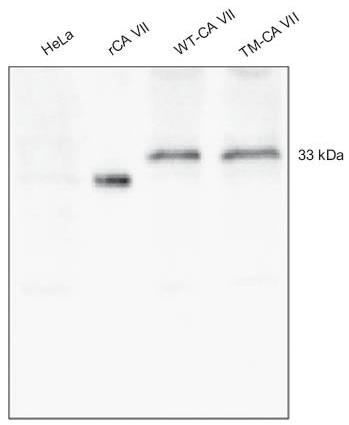
Fig1. Western blot analysis of intracellular levels of recombinant human WT- and TM-CA VII in HeLa cells.
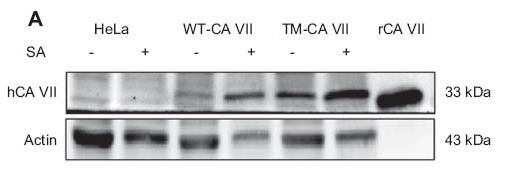
Fig2. Cells were transiently transfected with an empty vector and with the expression vector for either WT-CA VII or TM-CA VII.
Case 2: Yang GZ, et al. BMC Cancer. 2015
Carbonic anhydrase VII (CA7) is present in tissues such as the colon, but its connection to colorectal carcinoma (CRC) remained unclear. To investigate, researchers measured CA7 in CRC samples using methods like real-time PCR, western blot, and immunohistochemistry. They found that CA7 expression often drops in CRC tissues, both at the mRNA and protein levels. This reduced expression is linked to poorer tumor differentiation, lymph node metastasis, advanced stages, and worse clinical outcomes. In a study involving patients from Luoyang and Shanghai, those with lower CA7 levels had a shorter disease-specific survival. Notably, even among early-stage tumor cases, decreased CA7 was an independent predictor of poorer outcomes.
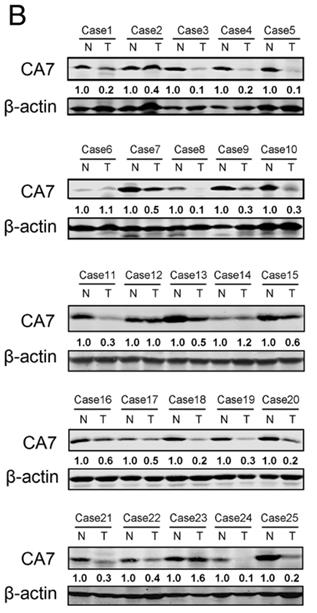
Fig1. Protein levels of CA7 in an independent set of 25 paired CRC specimens and adjacent normal tissues were determined.
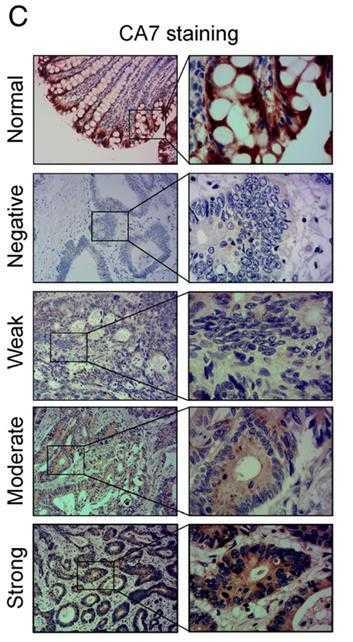
Fig2. Representative immunohistochemical expression patterns of CA7 in cancerous and adjacent normal mucosa specimens were shown.
Human Carbonic Anhydrase VII (CA7) is a cytosolic enzyme in the α-CA family, known for efficiently hydrating carbon dioxide. It plays a critical part in various body functions. In research, scientists use recombinant Human CA7 (rhCA7) to study its role in processes like respiration, acid-base balance, and bone resorption. CA7 is also important in forming bodily fluids, and it's actively involved in brain development and neuron activity, making it a hot topic in neuroscience research. Its specific activity is usually assessed by measuring esterase activity, which helps in understanding its function.
In the industrial realm, rhCA7 is valuable for drug discovery and therapeutic development, focusing on enzymes tied to metabolism. Produced in E. coli with a His tag, this recombinant protein helps create new therapies and investigate enzyme regulation. Its production also ensures the availability of standardized reagents, crucial for reliable scientific experiments. Moreover, rhCA7 assists in crafting diagnostic tools and antibodies, which are essential for detecting and measuring CA7 in samples, paving the way for deeper insights into its functions and related health conditions.
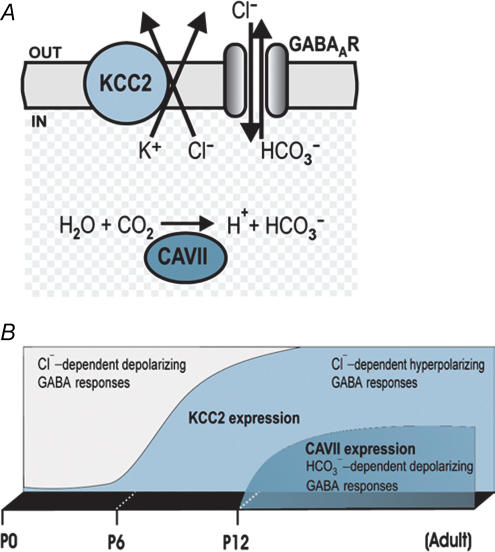
Fig1. KCC2 and CAVII as developmental switches in GABAergic transmission. (Claudio Rivera, 2005)
Not For Human Consumption!
Inquiry
- Reviews
- Q&As
Ask a Question for All CA7 Products
Required fields are marked with *
My Review for All CA7 Products
Required fields are marked with *
Inquiry Basket


